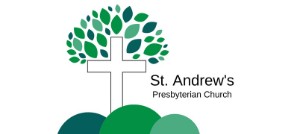Waiting for Peace
AdventOddly when I think about peacemakers, Bruce Thompson comes to mind. He didn’t work toward global peace, he worked in a hardware store in the rural area where I pastored. But, he did forge peace in his own heart and mind.
Bruce was the estranged husband of one of our most active church members. He struggled with the demons he wrestled with on a daily basis.
Alcoholism had destroyed his marriage and family until something in him finally broke that caused him to say, enough. Bruce just wanted peace in his heart, mind, and body and he began to work diligently for that peace.
Bruce was an avid woodworker who donated his elaborate birdhouses to the church and local causes. He planted and tended a large garden for others in the community. He came to love the simplicity of our rural church where he found rest from his struggles.
Even after he was diagnosed with lung cancer and his marriage was not restored in the way he longed for, Bruce came to know a deeper contentment within by making peace with his own problems and welcoming others into his life.
Isaiah, chapter 11, is poetry for Advent. Isaiah’s prophecy asks us to look beyond “the facts” and invites us to look for newness, as Bruce did, despite the limitations and fears of our present life. The poem is about a peaceful Kingdom—the kingdom of God that came to earth with Jesus’ birth.
The opening verses invite us to “look for the shoot” which is the new possibility for peace that cannot be explained by reason or facts. The prophecy seems to be about advent, about the one who is to come, the coming of Jesus who refused Roman rule of force and refused the strict religious code to open up our worlds to healing, forgiveness, and joy.
The poet Isaiah presents God’s impossibilities in verses 6-7:
The wolf shall live with the lamb, the leopard shall lie down with the kid, the calf and the lion and the fatling together, and a little child shall lead them. The cow and the bear shall graze, their young shall lie down together, and the lion shall eat straw like the ox.
Our old patterns of behaviour, hunger to get ahead, and our need to be in control are transformed.
They will not hurt or destroy on all my holy mountain; for the earth will be full of the knowledge of the Lord as the waters cover the sea.
Isaiah makes clear that it is not us who ushers in the new era but it is God that brings it forward. Isaiah’s call is not to action but to hope. But hope, in the end, is action, with the power to overturn old assumptions and sad cynicisms to give us new eyes and heal our hearts. The waiting of Advent is a good time for re-examining our old assumptions and priorities including how we think of and use our power. How might our own lives be remade so that the wolf and the lamb within us live together in harmony?
Those who listened to John the Baptizer were familiar with Isaiah’s prophecy. They thought the poem was just for them. John called believers to repent and show their lives had changed by how they lived, to think differently, and then to act differently. As John said, (v.8) Bear fruit worthy of repentance.
We are challenged as God’s people to move ahead or to turn back to business as usual. The change within us reminds us that we have yielded to God’s new vision and we can be different and the world can be different as a result.
The gospel story begins with John quoting Isaiah 40:1: Prepare the way of the Lord, make straight his paths.
The image presented in Isaiah is of all the world living in harmony. But you know what? We are still waiting for that reality, where we live in justice and peace, loving our neighbours, loving ourselves, and fully trusting and obedient to God’s love. Advent is pondering in our waiting, as Bruce did in our opening story, what it would be like to live with peace in our own hearts that make it possible to live in peace with others.

